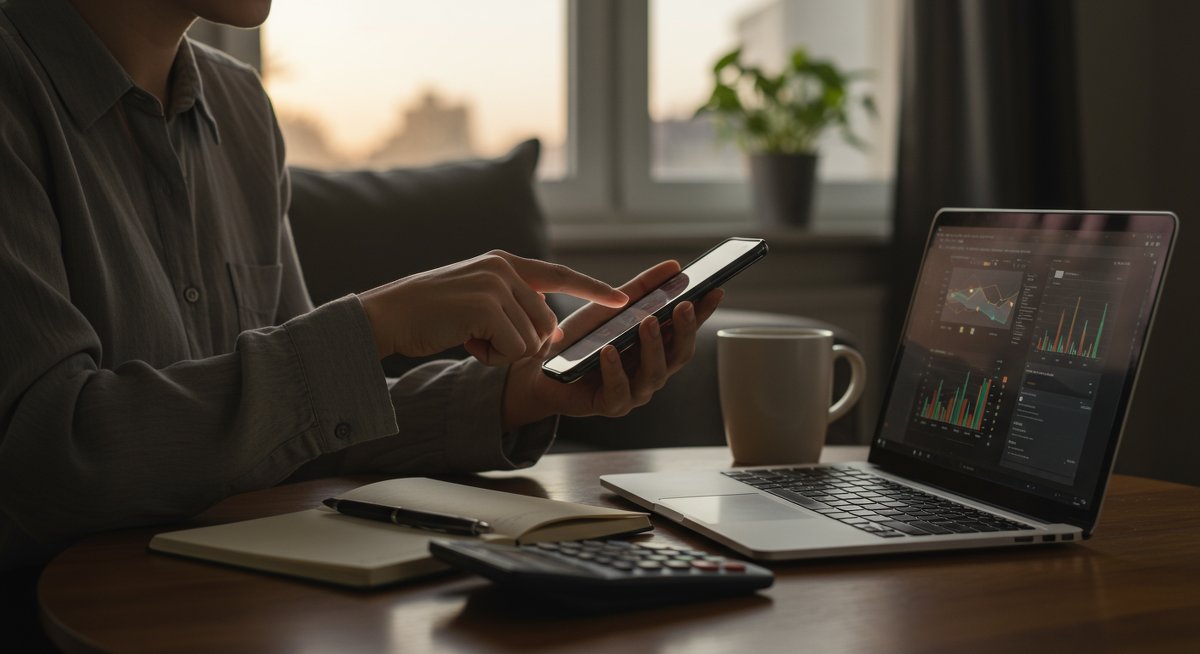
Why This Matters for New Crypto Traders
Welcome to the exciting world of crypto swaps! If you're just starting your journey as an international crypto trader, you're in the right place. Swapping one cryptocurrency for another is a fundamental skill, opening doors to diverse investment opportunities and portfolio diversification. But with so many platforms and options, it can feel overwhelming. This guide is designed specifically for beginners like you, offering a clear, step-by-step approach to crypto swaps, ensuring you can navigate the process with confidence and avoid common pitfalls.
Consider the story of Alex, a new trader from the UK. Alex wanted to diversify their portfolio and move from Bitcoin to Ethereum. Without a clear understanding of crypto swaps, Alex felt lost. This guide simplifies the process. It allows you to understand the core concepts, choose the right platforms, and execute swaps effectively, regardless of your location. Whether you're in Europe, Asia, or the Americas, this guide provides the knowledge and tools you need to start swapping crypto today.
Getting Started: What You Need to Know
Before diving into crypto swaps, it's essential to grasp a few key concepts. First, understand the difference between a crypto swap and a crypto exchange. A crypto exchange is a platform where you can buy, sell, and trade cryptocurrencies. A crypto swap, on the other hand, is a more streamlined process, typically focusing on exchanging one cryptocurrency directly for another. This is often a faster and more user-friendly option for beginners.
Second, understand the basics of blockchain technology. While you don't need to be an expert, knowing how transactions work on a blockchain like Bitcoin or Ethereum will help you understand the process. Each swap involves a transaction that is recorded on a blockchain. This makes the process transparent and secure. Finally, be aware of the different types of cryptocurrencies and their potential uses. Knowing the basics will help you make informed decisions about what to swap.
For example, consider Sarah, a trader from Canada. Sarah wants to swap Bitcoin for Ripple (XRP). Understanding the basics of both cryptocurrencies helps Sarah assess the potential risks and rewards of this swap. With a solid foundation of these concepts, you can confidently navigate the world of crypto swaps.
Step-by-Step Trading Solution
Performing a crypto swap can be broken down into simple steps. First, choose a reputable swap platform. Look for platforms that are user-friendly, have low fees, and support the cryptocurrencies you want to swap. Next, create an account and verify your identity if required. Many platforms have KYC (Know Your Customer) requirements to comply with international regulations. After that, deposit the cryptocurrency you want to swap into your account. This involves sending your crypto from your wallet to the platform's deposit address.
Once your deposit is confirmed, select the cryptocurrency you want to receive and enter the amount you want to swap. The platform will show you the current exchange rate and any associated fees. Review the details and confirm the swap. The platform will then execute the swap and credit the new cryptocurrency to your account. Finally, you can withdraw the swapped cryptocurrency to your personal wallet or keep it on the platform.
For example, consider John, a trader in Australia, who wants to swap some Bitcoin for Litecoin. John first chooses a beginner-friendly platform. After registering and verifying his identity, he deposits his Bitcoin. He then selects Litecoin and enters the amount he wants to swap. The platform displays the exchange rate and fees. John reviews and confirms the swap. The Litecoin is then credited to his account, and he can withdraw it to his personal wallet.
Your First $[Amount]: What to Expect
Starting with a small amount is a smart strategy for beginners. This allows you to get familiar with the process without risking a large investment. When swapping a small amount, expect to see fees deducted from your total. These fees can vary depending on the platform and the cryptocurrencies involved. You might also experience slight differences in the exchange rate, which is the price at which one cryptocurrency is exchanged for another.
For instance, if you start with $100, you might see a fee of $1-$2. Additionally, if the exchange rate fluctuates during the swap process, you might receive slightly less or more of the new cryptocurrency. The impact is minimized with smaller amounts. The key is to understand that fees and exchange rate fluctuations are normal and a part of the crypto trading process. With a small amount, you can become comfortable without significant financial exposure.
Also, be aware of minimum swap amounts. Many platforms require a minimum amount to initiate a swap. Before you start, check the platform's requirements. Understanding these factors allows you to manage your expectations and make informed decisions. Start small and scale up as you gain more confidence.
Common Beginner Mistakes to Avoid
New traders often make a few common mistakes. One of the most frequent is sending cryptocurrency to the wrong address. Always double-check the receiving address before initiating a swap. Another mistake is failing to research the platform and its fees. Fees can significantly impact your returns, so compare different platforms. Also, avoid trading based on emotion, such as fear of missing out (FOMO) or panic selling. Make a trading plan and stick to it.
Finally, don't put all your eggs in one basket. Diversify your portfolio and avoid investing heavily in a single cryptocurrency. By avoiding these common mistakes, you can protect your investment and increase your chances of success. Be patient, do your research, and never invest more than you can afford to lose. Starting out slowly will help you build experience without taking unnecessary risks.

International Trading Considerations
When trading internationally, several factors come into play. First, consider the regulations in your country and the country where the swap platform is based. Regulations on cryptocurrency vary widely. Always ensure that the platform you use complies with the relevant regulations. Also, be mindful of transaction fees, which can vary depending on your location. Some platforms may charge higher fees for international transactions.
Moreover, consider the impact of currency exchange rates. If you are swapping between cryptocurrencies and fiat currencies, the exchange rate between your local currency and USD, for example, can impact your profit or loss. Check for any hidden fees and exchange rates charged by your bank or payment processor for international transfers. Finally, consider the time zones. Crypto markets are open 24/7, but the best times to trade may vary depending on your location. Research platforms that have global customer service. These considerations will help you trade with greater awareness of international implications.
Building Your Crypto Knowledge
Continuous learning is crucial in the crypto world. Stay informed by following reputable news sources, reading industry blogs, and attending webinars. Learn about technical analysis, which can help you understand market trends. Take advantage of educational resources like online courses and tutorials to improve your understanding of crypto trading. Join crypto communities and forums to connect with other traders and learn from their experiences. Knowledge is your most valuable asset, so make it a priority. Regularly assess your trading strategies and adapt them based on new information and market conditions.
For example, consider Maria, a trader from Germany. Maria regularly reads industry publications to stay informed about market trends. She participates in online forums where she discusses trading strategies with other traders and learns about new technologies and platforms. By continually expanding her knowledge, Maria becomes a more informed and successful trader. This strategy will allow you to make informed decisions.
Next Steps in Your Trading Journey
Once you've mastered the basics, it's time to explore advanced strategies. Consider using stop-loss orders to protect your investments and limit potential losses. Learn about different trading indicators to help you identify market trends. Study market cycles and how they affect cryptocurrency prices. Explore advanced swap platforms to improve your trading experience. Continue to diversify your portfolio and research new cryptocurrencies. Also, explore more advanced trading tools. By taking these steps, you can take your trading to the next level and increase your chances of success.
Remember, consistency and continuous learning are key. Stay updated, stay safe, and trade wisely. With dedication and a strategic approach, you can build a successful trading journey.